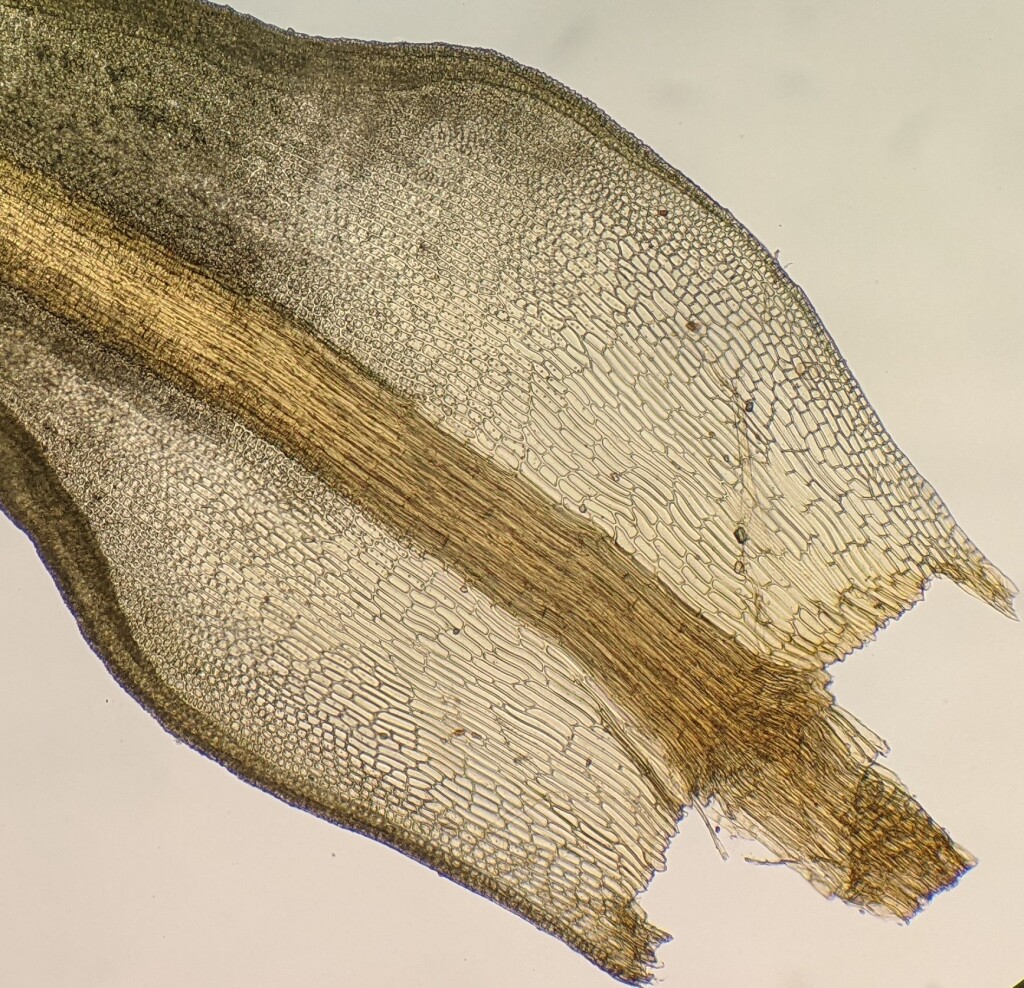Pseudocrossidium
Dioicous. Asexual reproduction by gemmae on the adaxial costa (not in Victoria) or in leaf axils (not in Victoria) or by rhizoidal tubers (not in Victoria). Cushions or turves on soil or rock. Stems often branching, with sparse rhizoids; central strand present; hyalodermis absent or weakly differentiated; sclerodermis weakly differentiated. Leaves ovate or ligulate to lanceolate, erect- to wide-spreading when moist, appressed and often spiralling around stem when dry; apex rounded (not in Victoria), acute or acuminate, often with a smooth or slightly denticulate hairpoint; costa percurrent (not in Victoria) or excurrent, with quadrate to short-rectangular adaxial superficial cells, with a differentiated adaxial epidermis, sometimes forming a pad of photosynthetic filaments (not in Victoria), with or without an adaxial stereid band, with a hydroid strand, with an abaxial stereid band, with or without a differentiated abaxial epidermis, with quadrate to short-rectangular abaxial superficial cells; margin entire or weakly denticulate near apex, recurved or revolute, without a border or occasionally with differentiated cells within the revolute margin (not in Victoria); laminal cells in apical half subquadrate, elliptic or hexagonal, pluripapillose, with yellow to orange KOH reaction; basal laminal cells extending further near costa, rectangular, smooth. Acrocarpous. Capsules erect, straight or occasionally curved, ellipsoid to cylindric, exserted, operculate, with an annulus. Calyptra cucullate, smooth. Operculum conic or rostrate. Peristome of 32 straight (not in Victoria) or twisted filaments.
Around 17 species, mostly from southern and western South America, but also extending throughout the Americas, Europe, western Asia, Africa, New Zealand and Australia (Cano et al. 2021); two species in Victoria.
Pseudocrossidium in its current circumscription was shown in phylogenies of combined chloroplast and nuclear DNA sequences to comprise several lineages, some closer related to other genera than they are to the remaining Pseudocrossidium lineages (Cano et al. 2021). Cano et al. (2021) partially resolved this issue through the description of new genera for some of these lineages or transferral of some species to other genera. However, they retained Pseudocrossidium in a non-monophyletic state as the type species and another Pseudocrossidium species formed a group with the genus Aloinella. These two species of Pseudocrossidium differ from the remaining Pseudocrossidium, including the two Victorian species, by their slightly cucullate apices and bistratose lamina (Cano et al. 2021) and if monophyly is to be restored in Pseudocrossidium it is likely that the lineage that the two Victorian species belong to would be segregated as a separate genus.
 Spinning
SpinningCano, M.J.; Jiménez, J.A.; Gallego, M.T.; Guerra, J. (2021). A molecular approach to the phylogeny of the moss genus Pseudocrossidium (Pottiaceae, Bryopsida) and its taxonomic implications . Journal of Systematics and Evolution.

